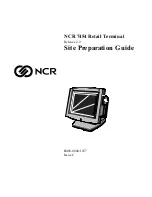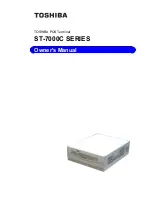
PS-SAU-1900E
Mar. 8
th
,1999 (Rev. 0.0)
--- CONFIDENTIAL AND PROPRIETARY ---
13
Caller ID Transmission.
Must be able to transmit valid Caller ID information to
the analog telephone set, as defined in relevant
Bellcore North American voice-band data transmission
specifications.
Standard Call Progress Tones
These tones provide audio feedback to the user,
through the audio voice path. All Standard Call
Progress Tones, as defined by EIA/TIA-464B, Table
29, will be supported. The Tone Plan data table and
software should be designed to allow programmable
selection of different tone tables, which may be
required to support different network specifications.
To this end, the product shall support the ability to
alter the frequencies, timing, and power levels of each
specified tone.
•
Dial Tone:
Applied to external telephone when
user is off hook and the LAU is operating in the
Mobile Station Idle State
(meaning that a valid
CDMA Pilot and Sync Channel are obtained).
•
Reorder Tone:
Also called “Fast Busy Tone”.
Applied to an off hook analog telephone when the
LAU is unable to acquire a valid CDMA Pilot and
Sync channel. Also applied during certain
situations to warn the user of improper operating
conditions on the LAU / Telephone interface
(dialing time-outs, etc.).
•
Busy Tone:
This tone should be supported.
However, there is currently no recognized mode of
operation in which the LAU would be required to
generate this tone locally.
•
ROH Tone:
Also called “Receiver Off Hook Tone”.
Not specified in EIA-464, but the default tone is
specified here as follows: 1400 Hz + 2260 Hz, +3
to -6 dBm per frequency into 600 ohms.
Other Call Progress Tones
These tones provide the user with special audible call
progress feedback for events not covered by Standard
Call Progress tones. Specific frequencies and levels
are as defined by EIA/TIA-464B, Table 30. Software
should support use of multiple tone tables, to facilitate
setting the product operation for different market
requirements. To this end, the product shall support
the ability to alter the frequencies, timing, and power
levels of each specified tone.
•
Recall Tone:
This tone is applied over the air
interface by the system base station. The LAU
need not generate this tone.
•
Call Waiting Tone:
This tone is generated over
the air interface by the base station. The LAU need
not generate this tone.
•
Stutter Dial Tone:
A special tone which indicates














































